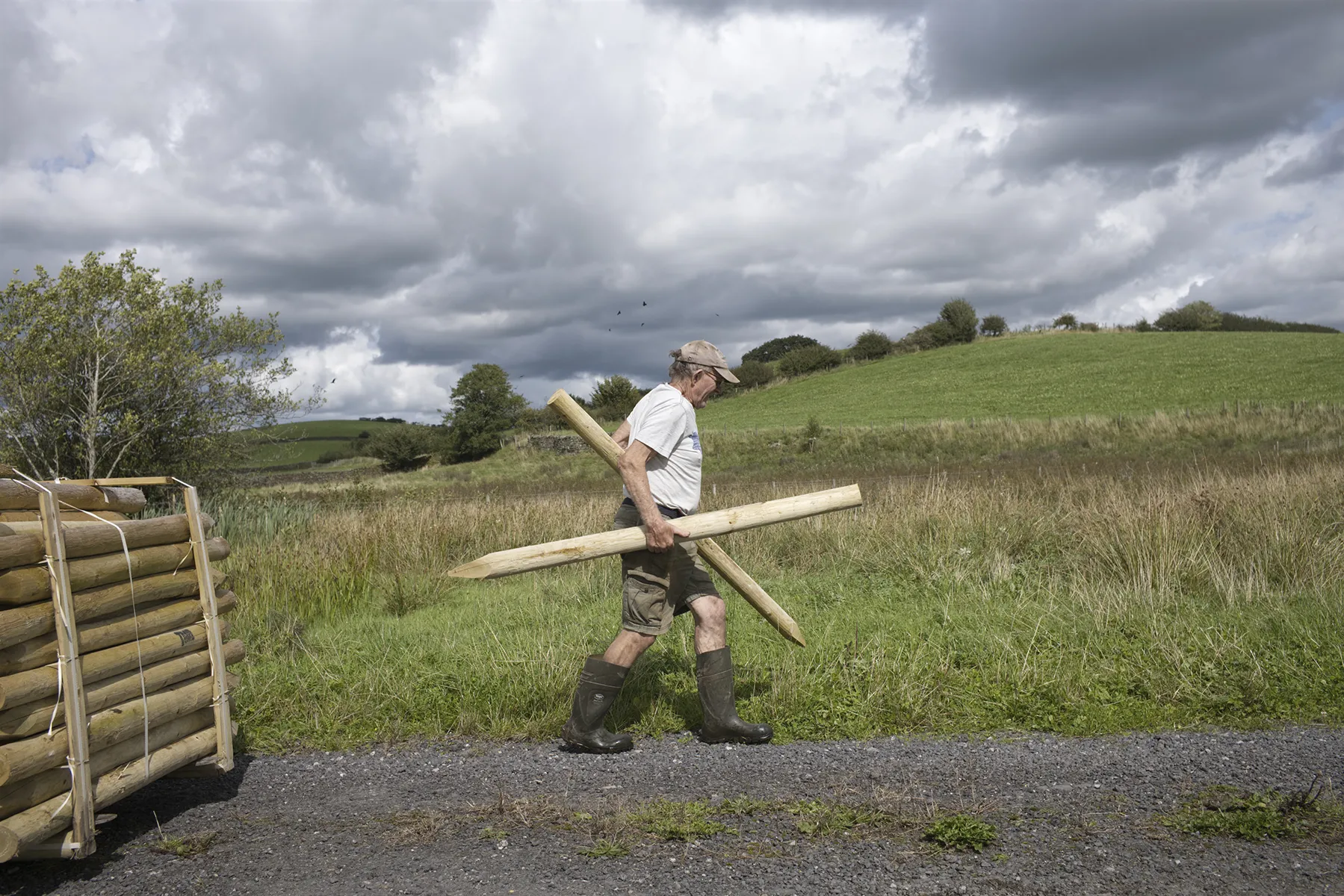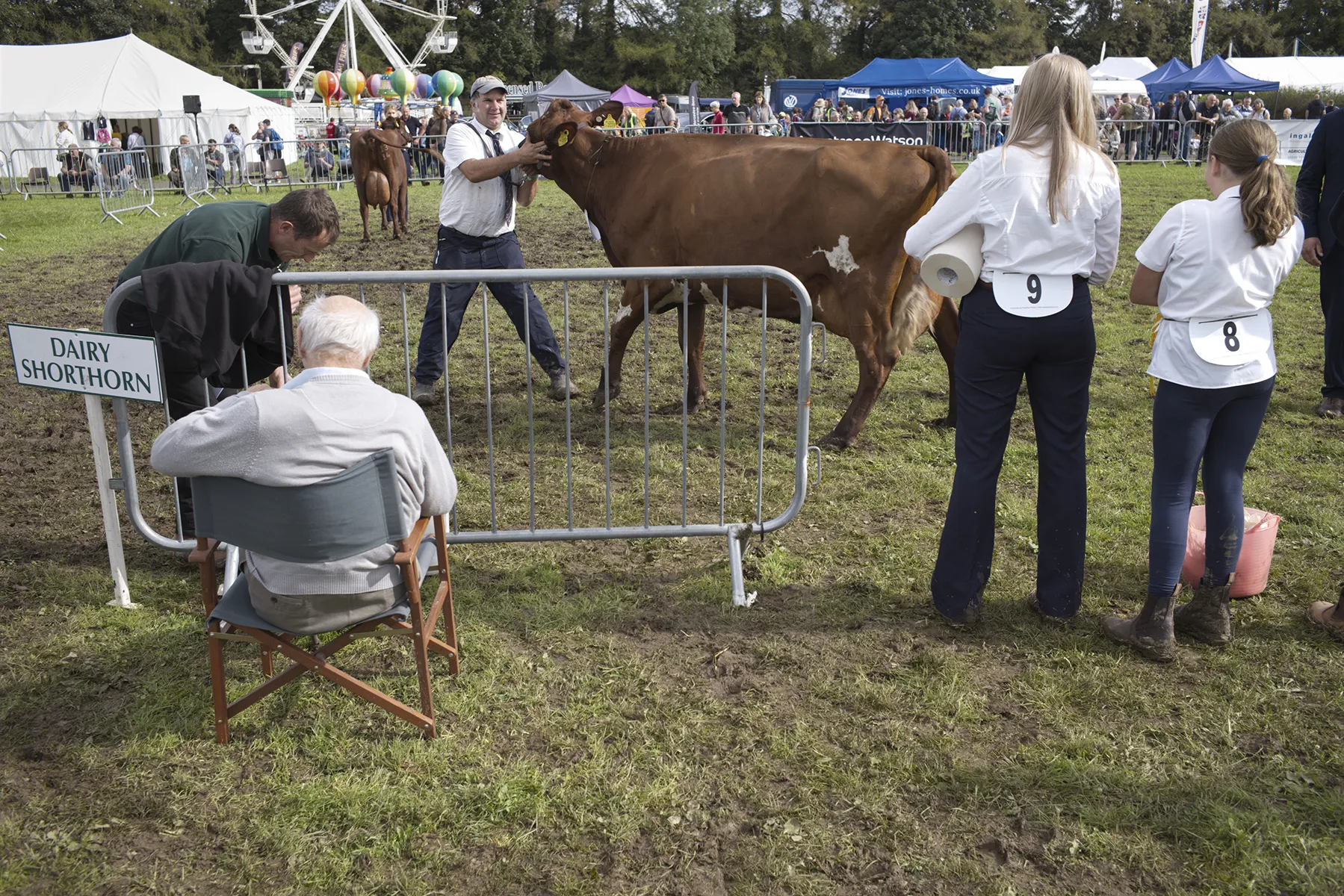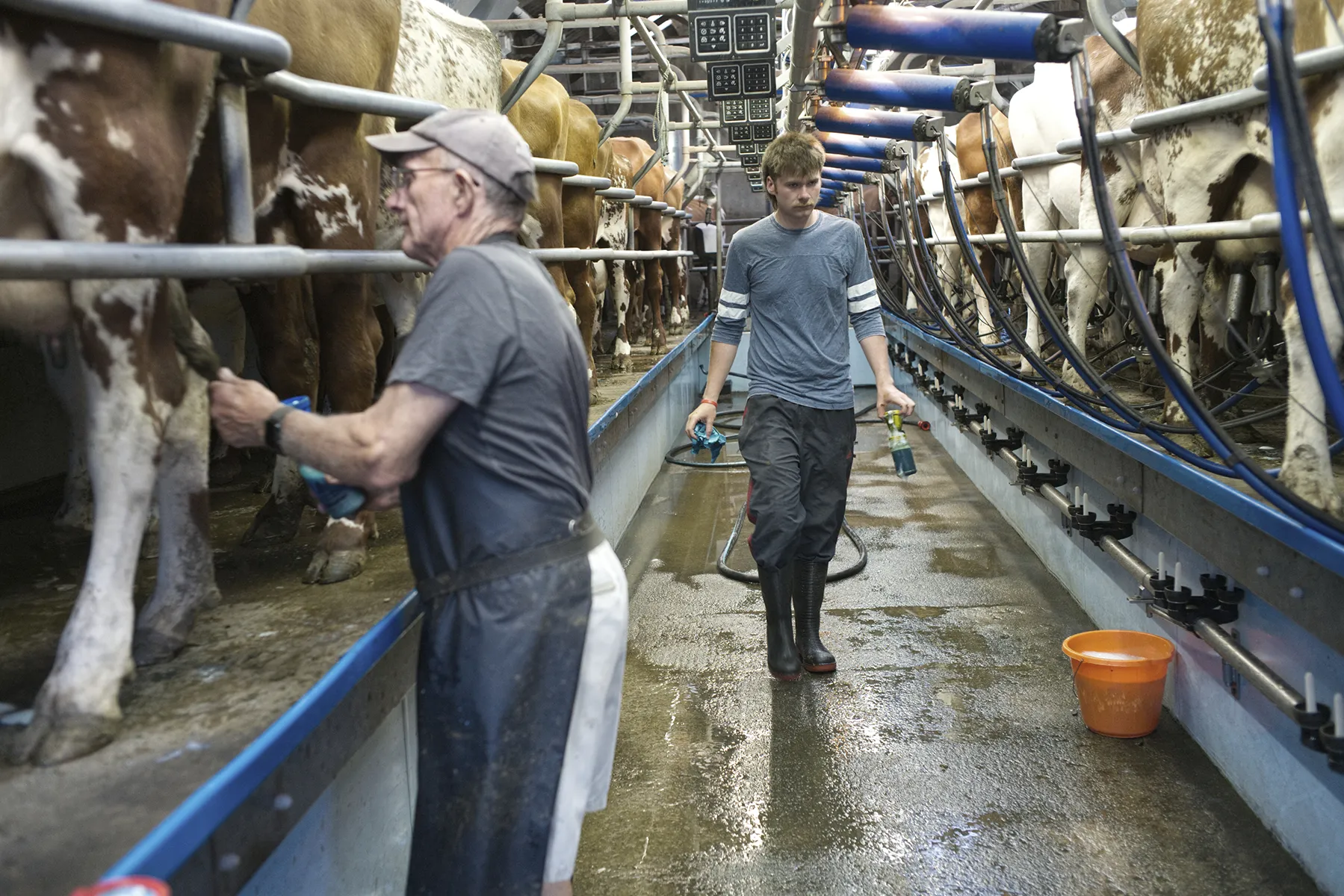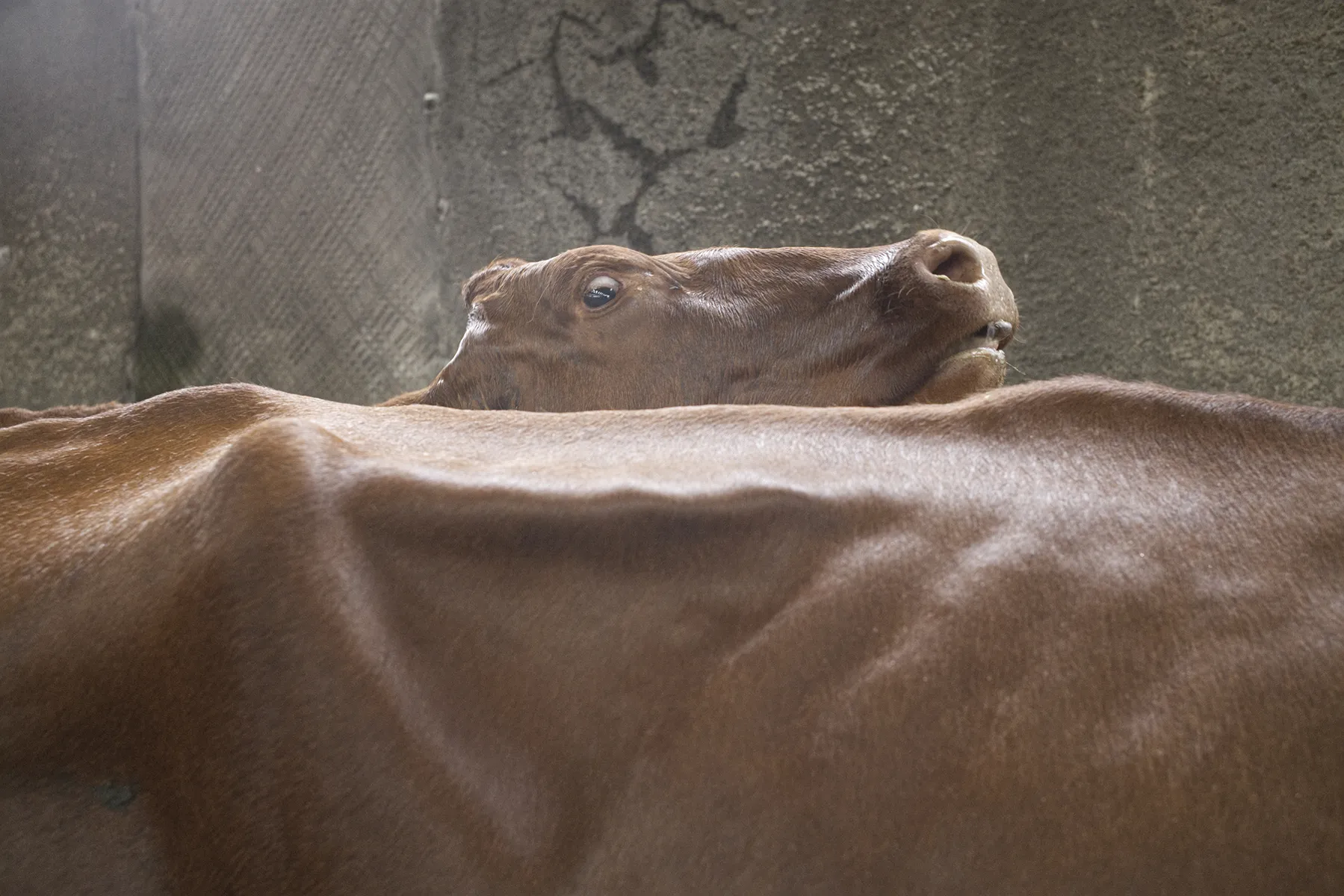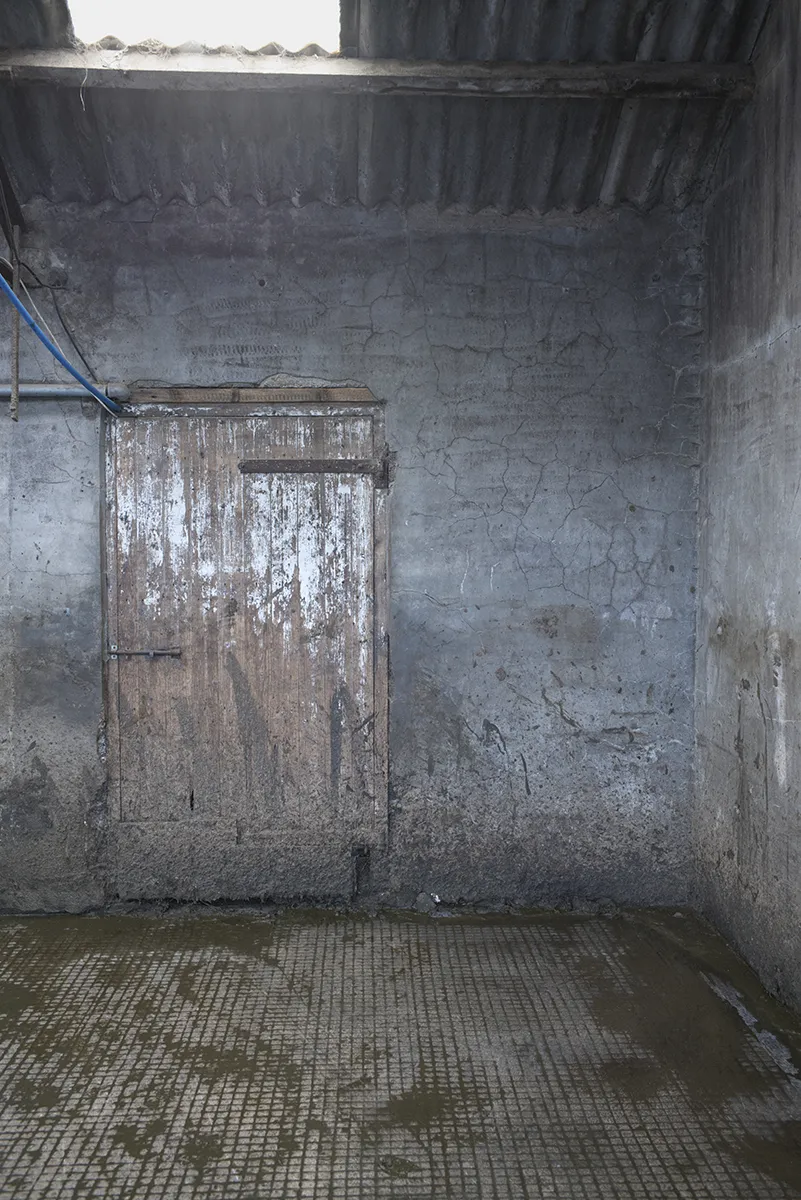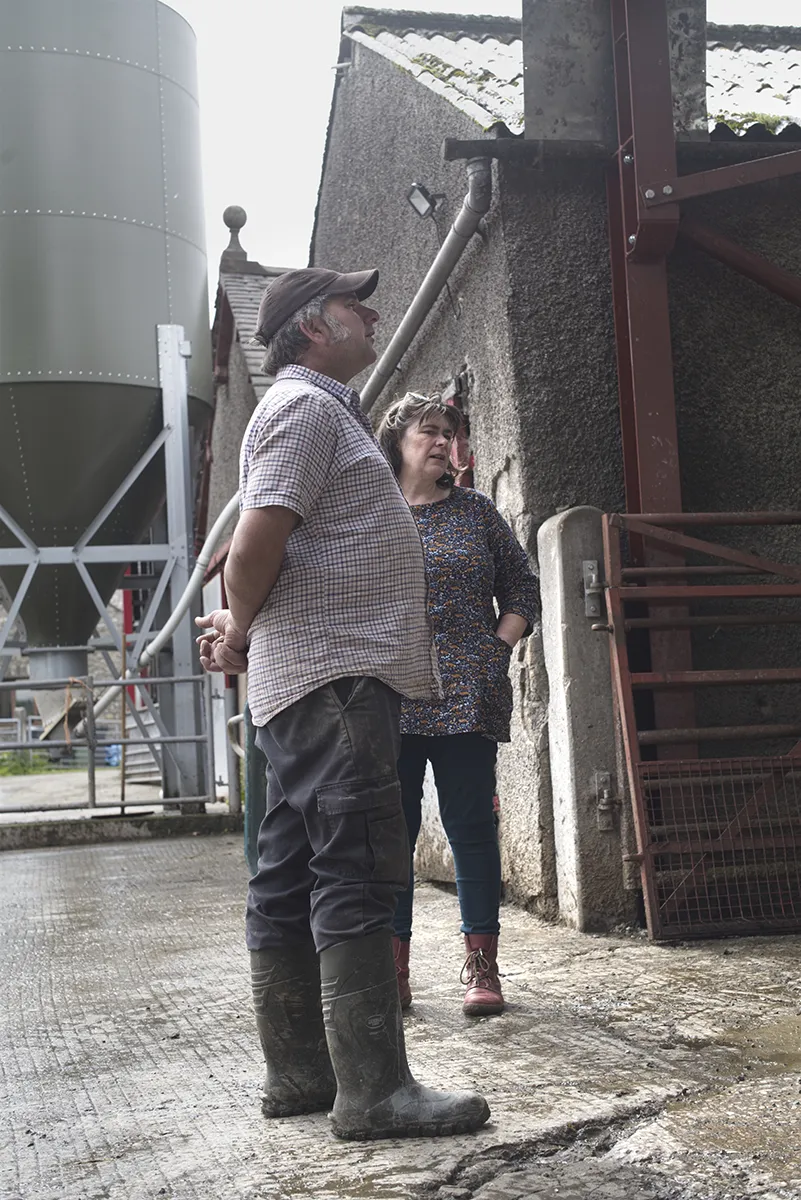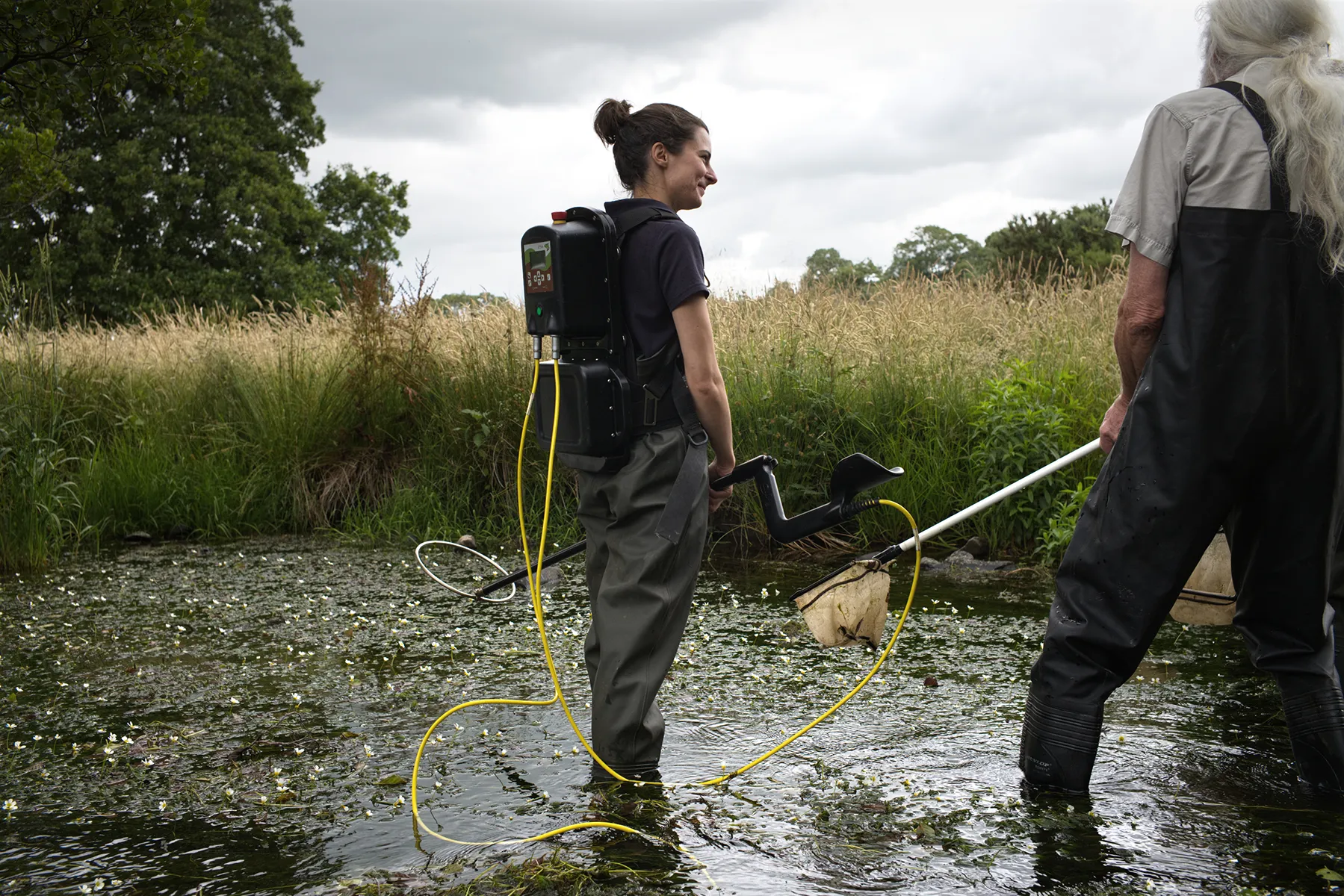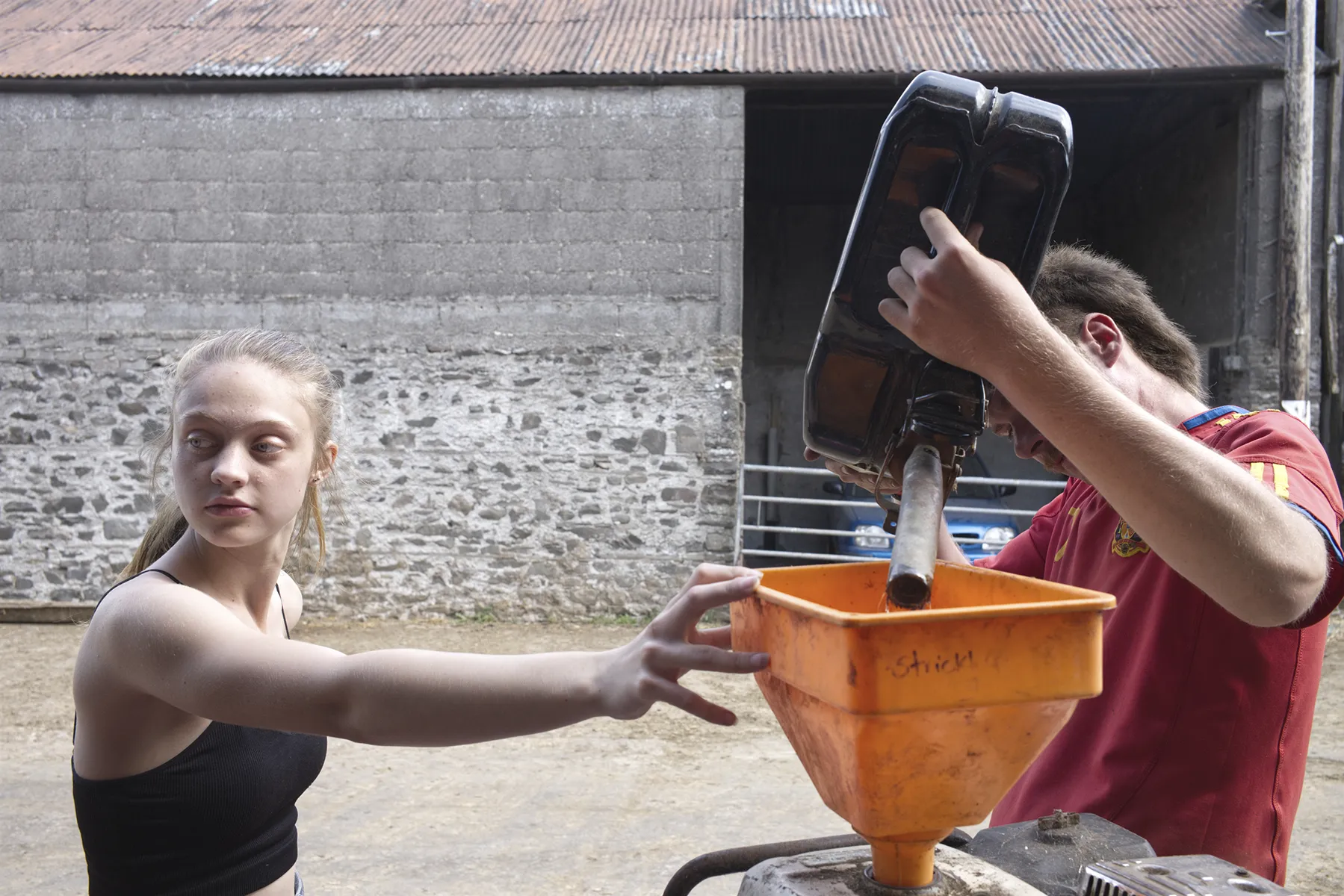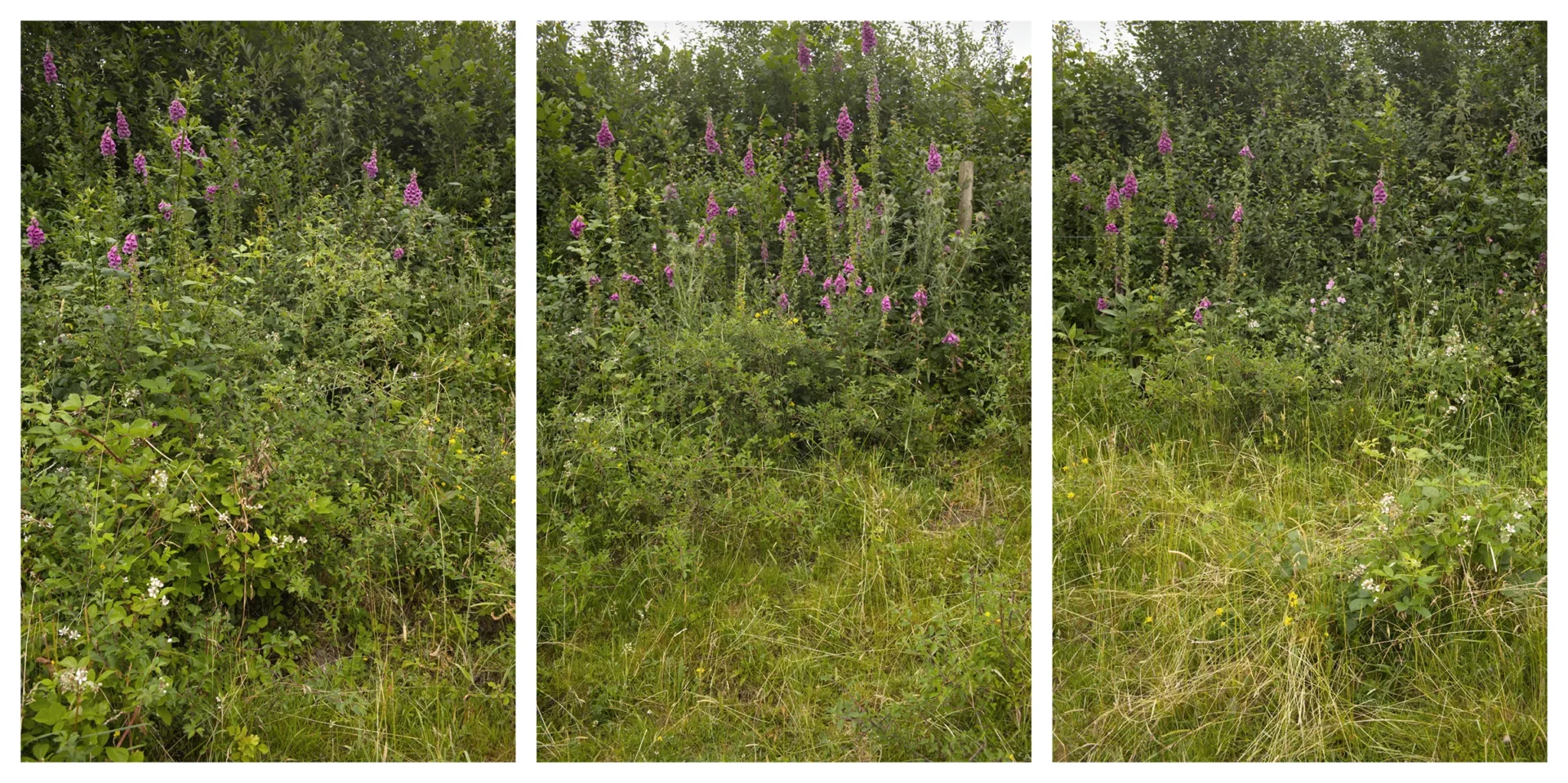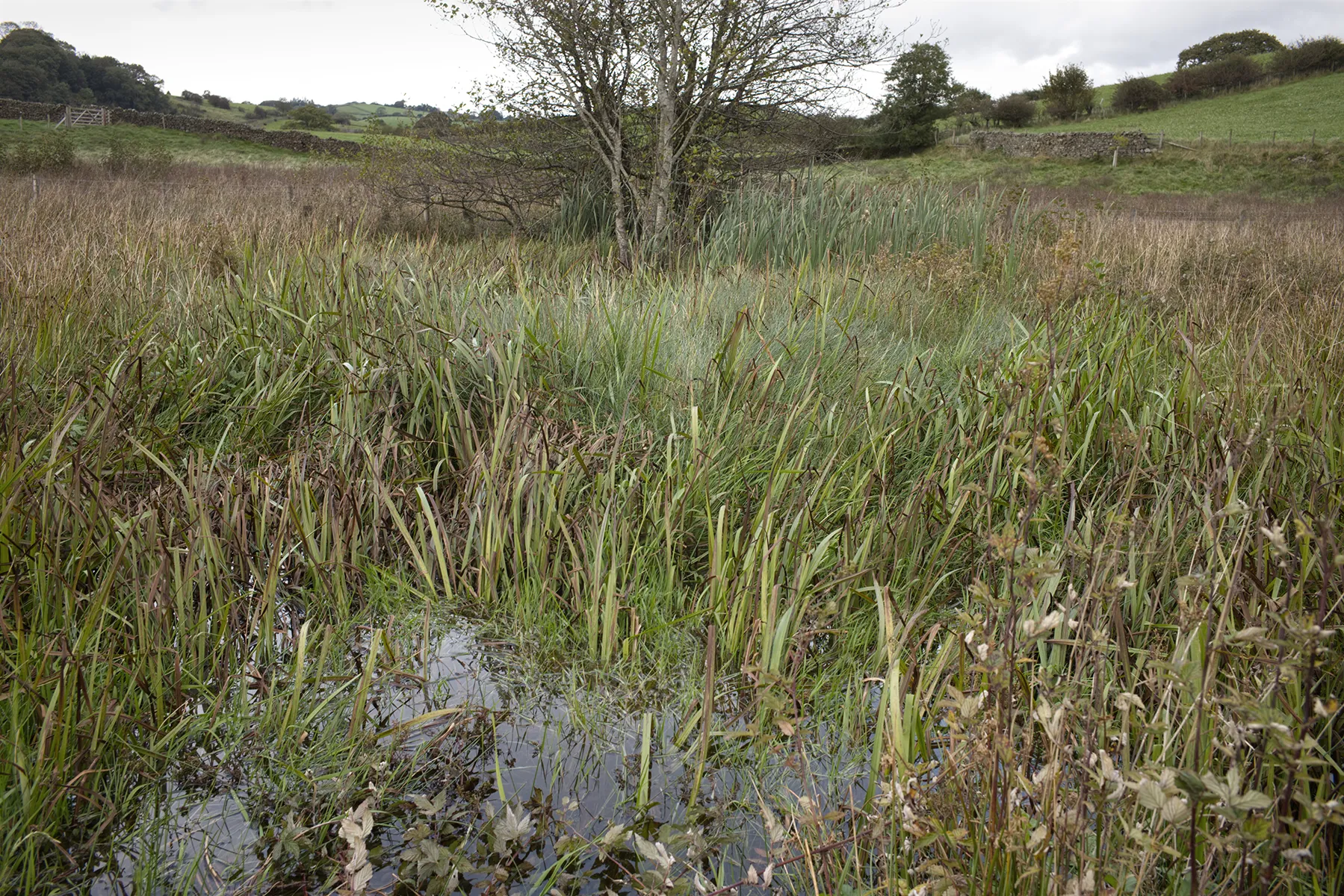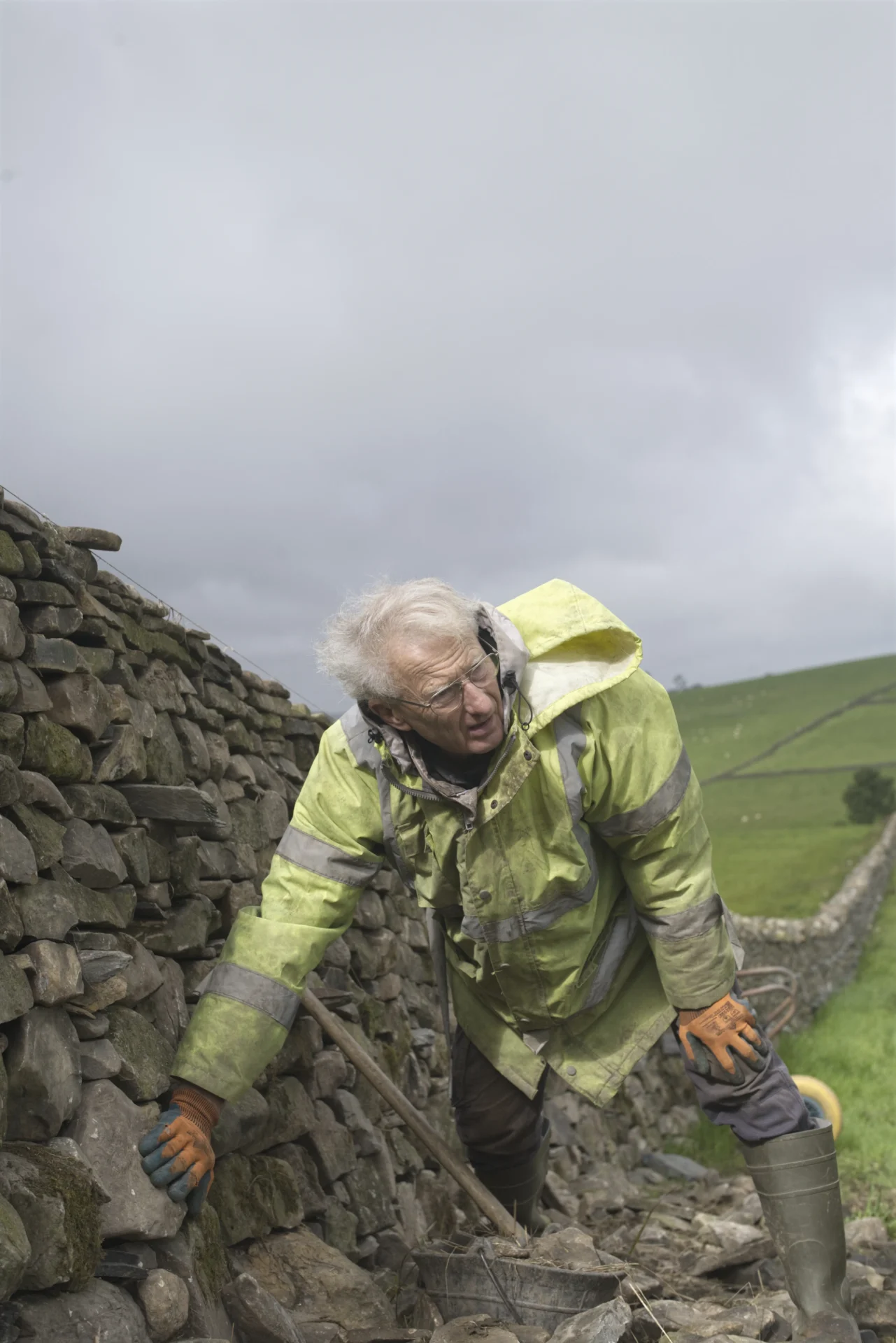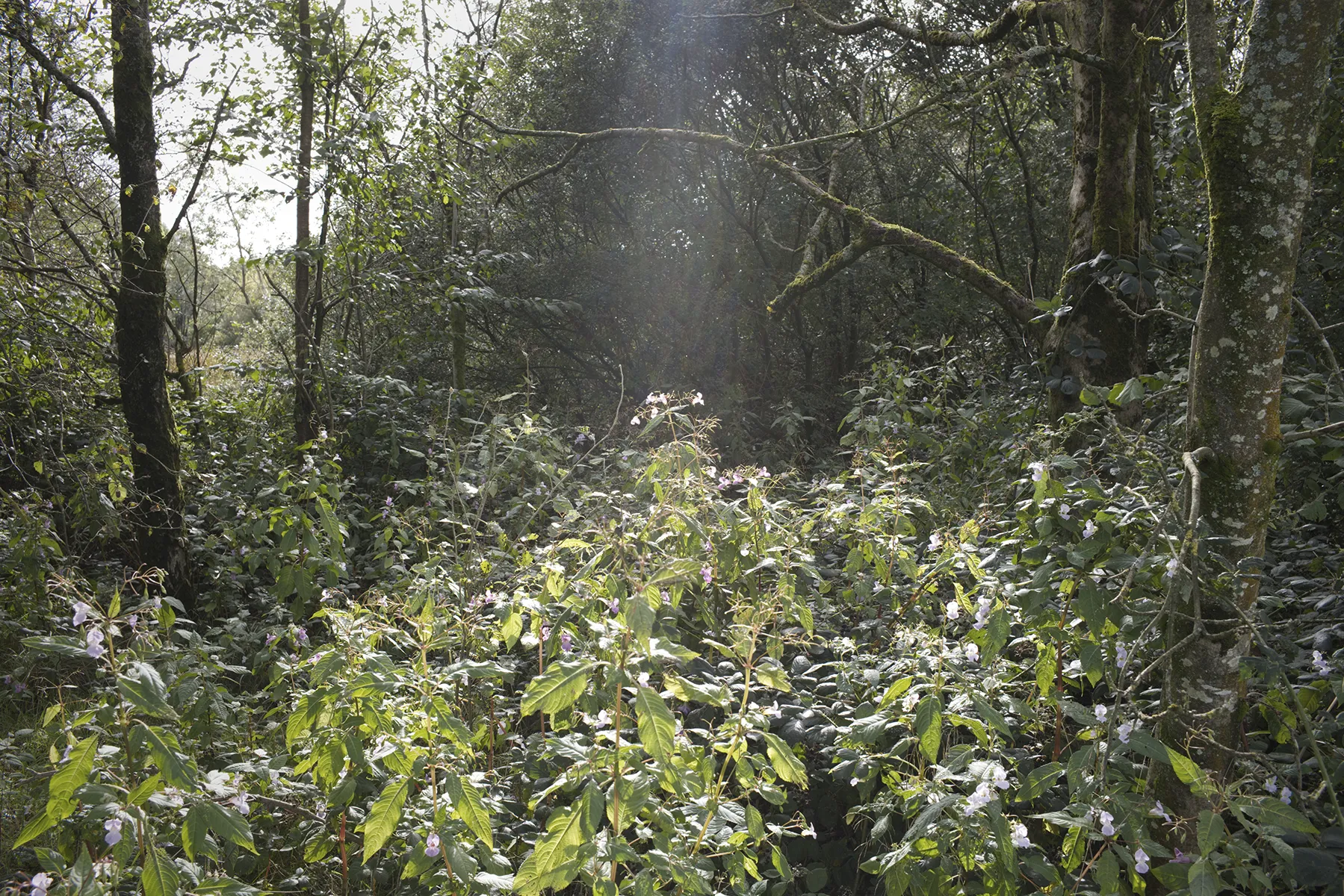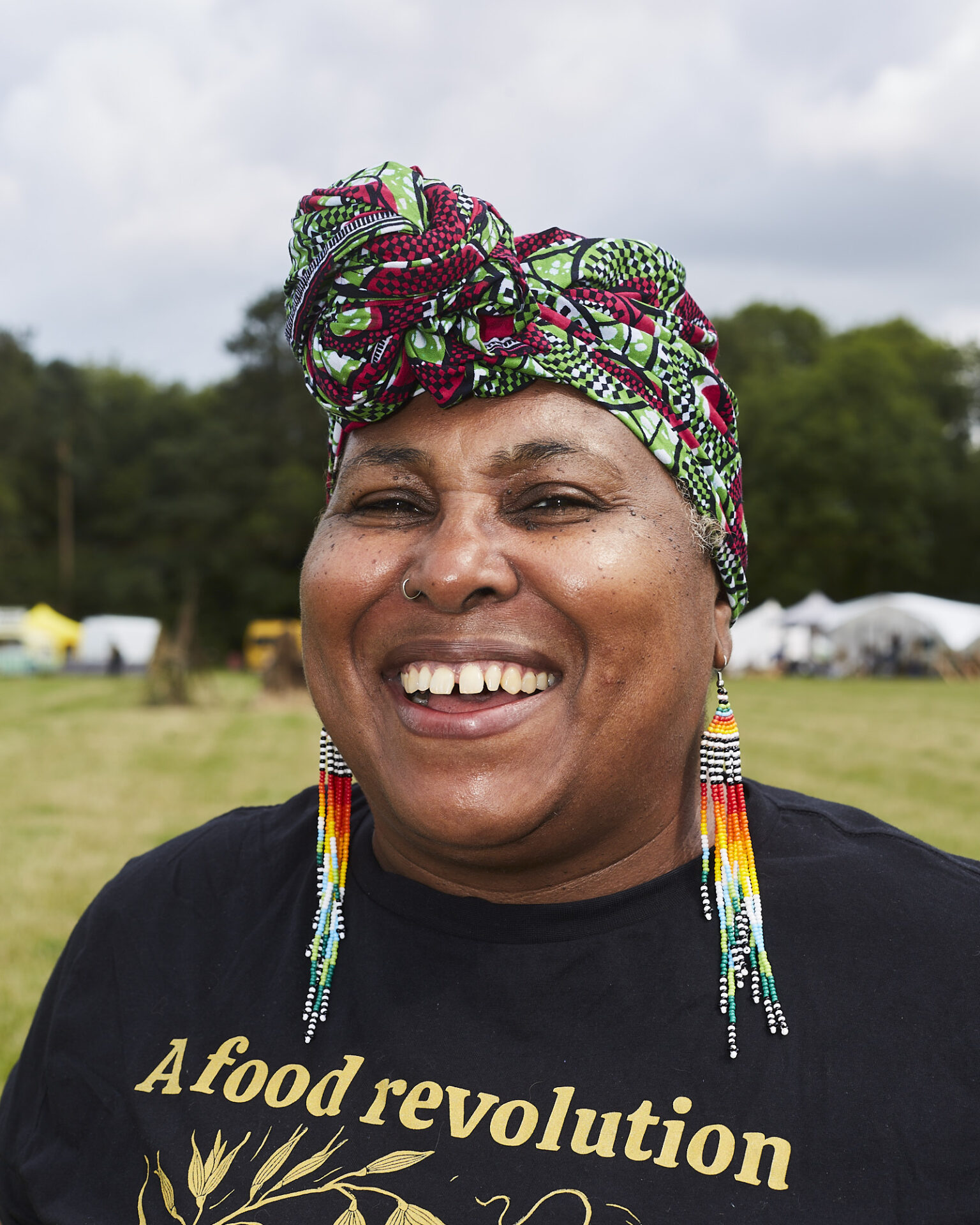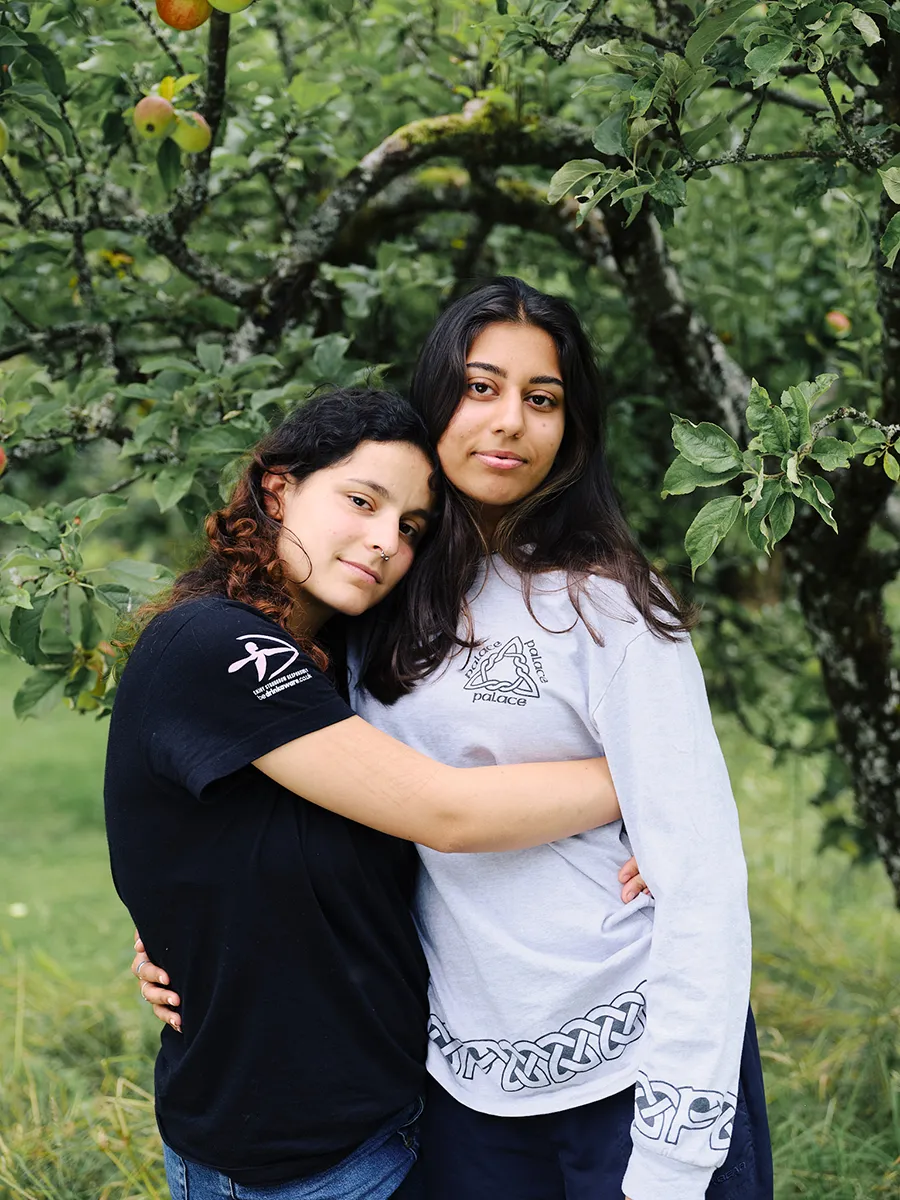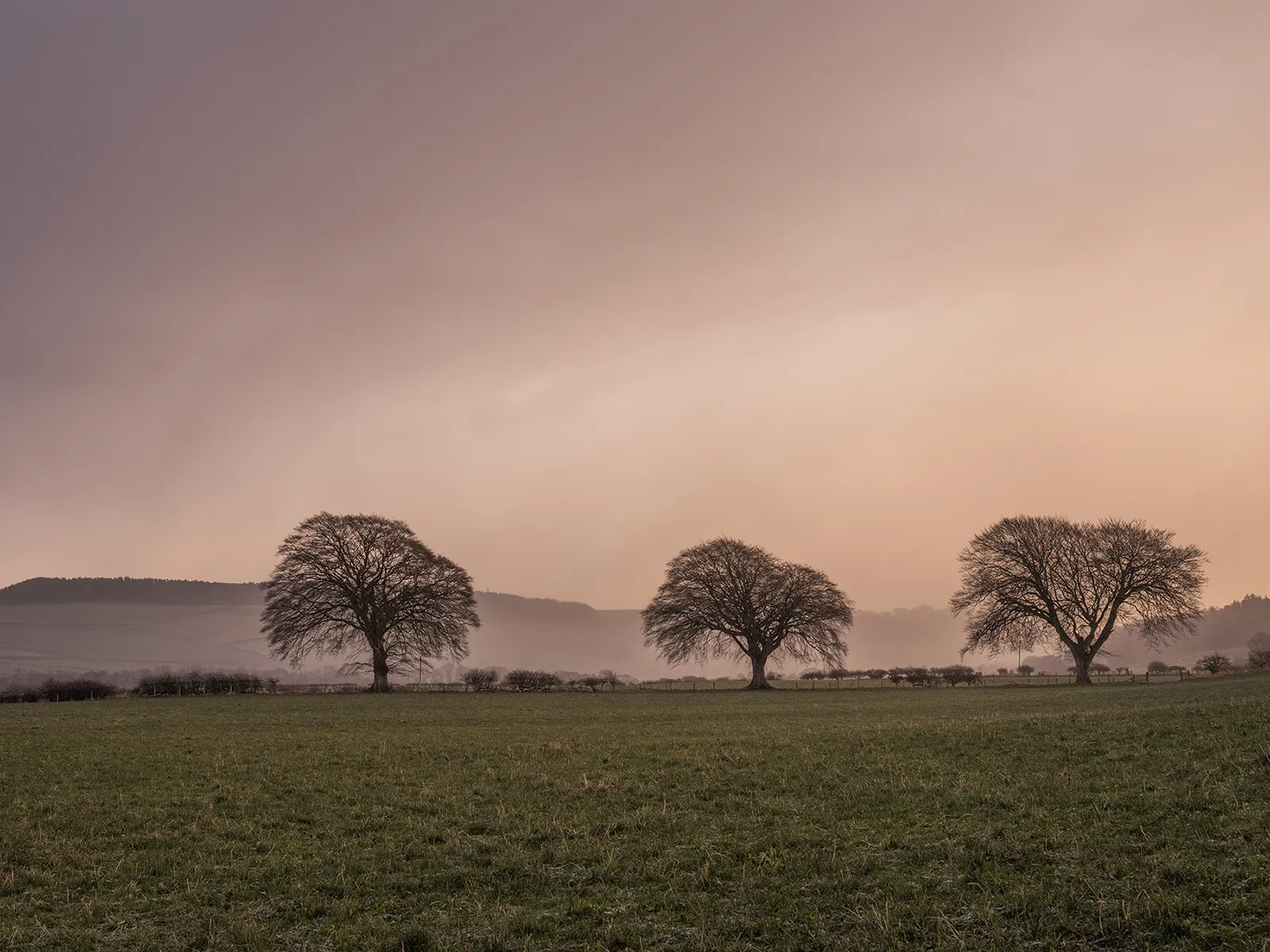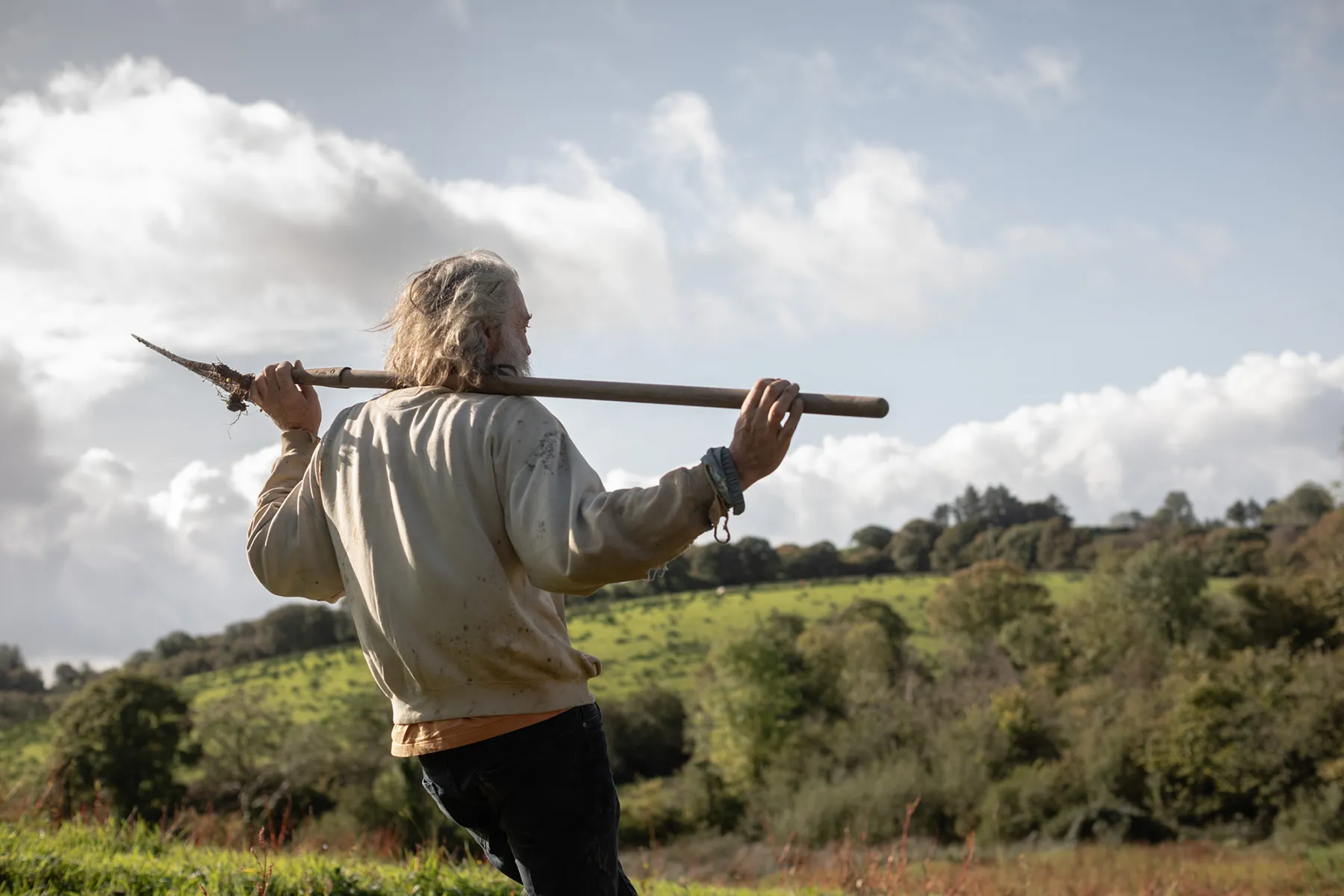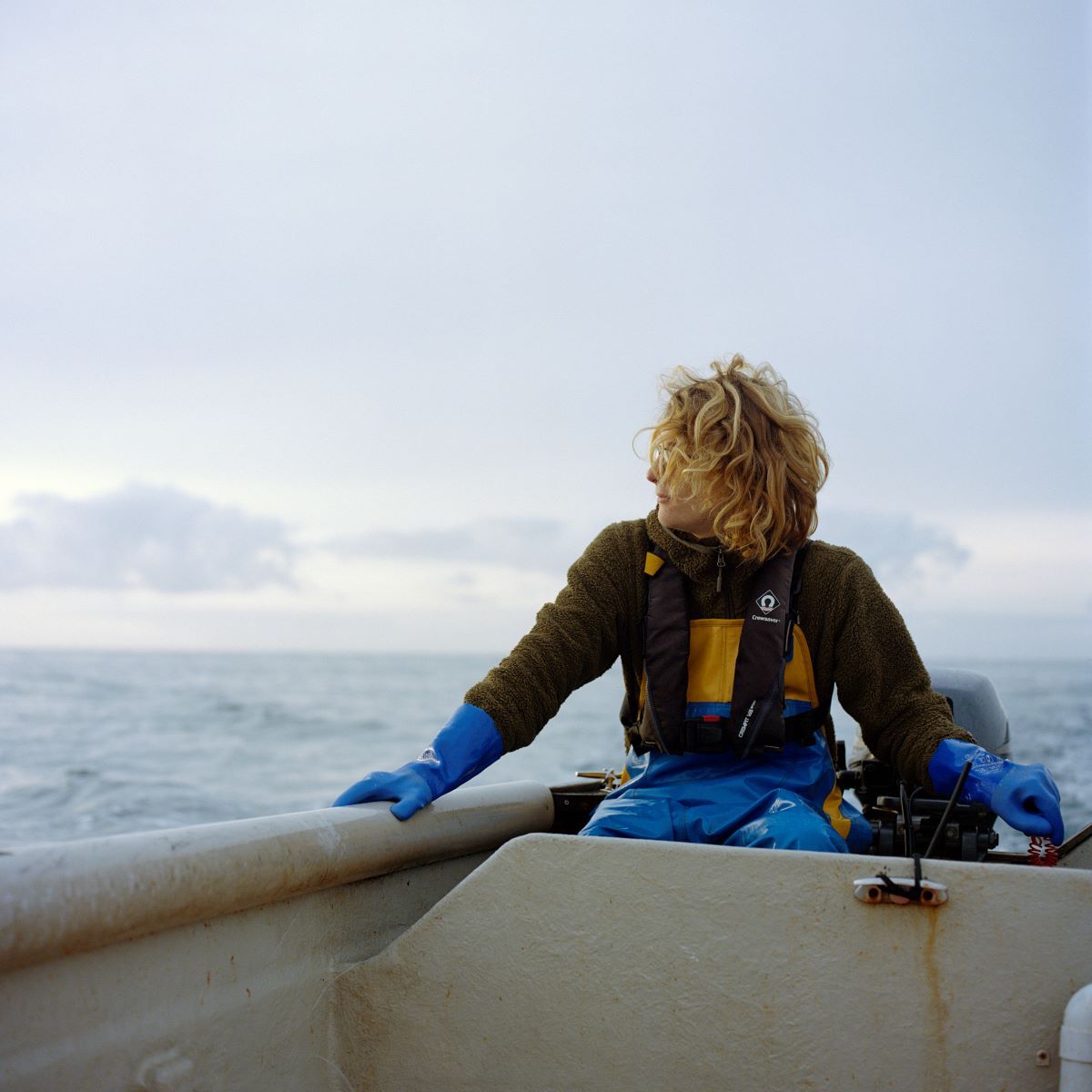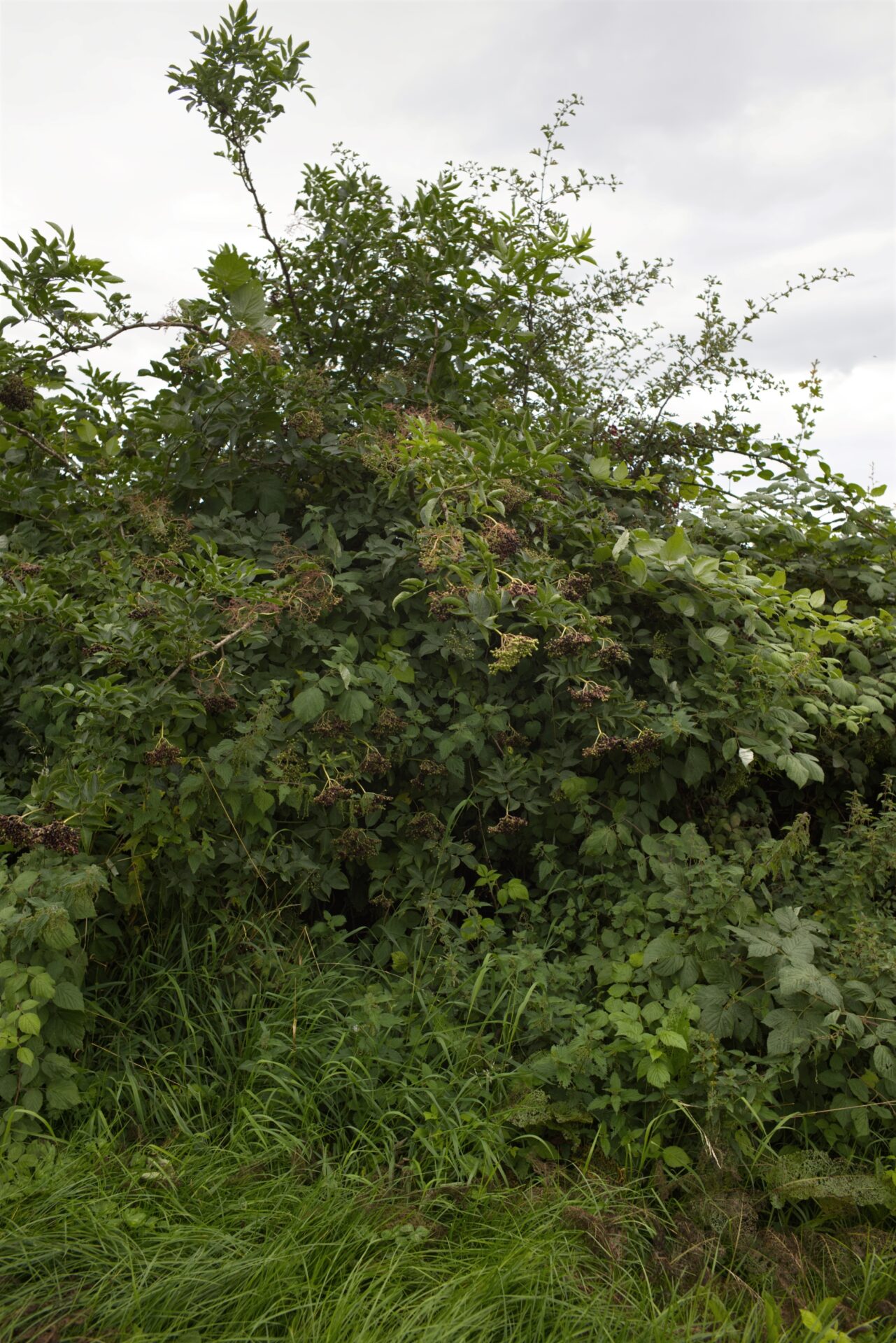
AGRI-CULTURE: A LINEAGE OF HEDGEROW LIGGING
Inspired by Strickley Farm in Cumbria // Photography by Johannes Pretorius // Poetry by Testament // Exhibited at Open Eye Gallery in Liverpool and Abbott Hall in Kendall
Jump to…
‘THE LIG’
Words by Hot Poet Testament
Photography by Johannes Pretorius
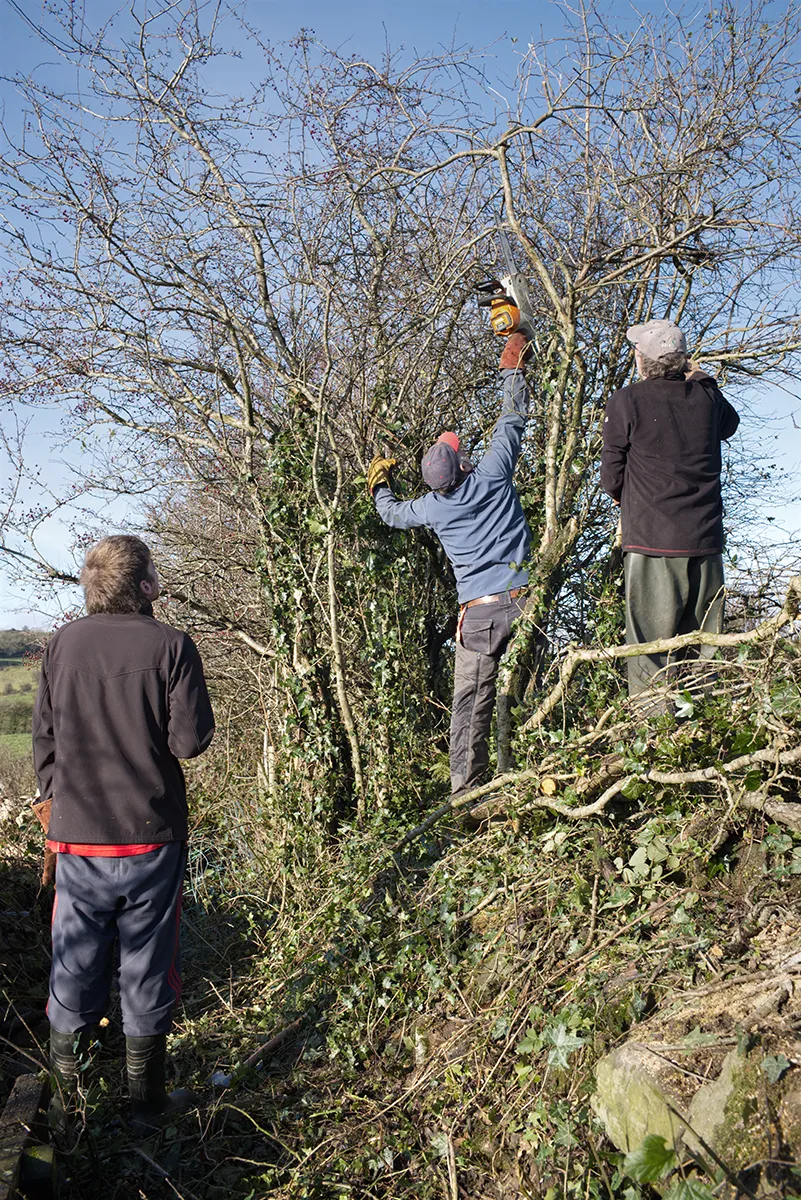
The autumnal morning cold
on this farm up in the Lakes.
One bloke. Two bloke.
…The third one’s on the way.
Fingertips in well-worn work gloves.
Sharpened chainsaw.
Heads crowned with caps
so as not to snag on thorns.
Pair of nippers lie on the grass
beside a small sheathed axe.
Dad, sideburns but clean shaven,
and his lad, 19, young, moustached,
talk of managing these lands, trees,
brief chat, then
proceed with the task at hand:
“Ligging.”


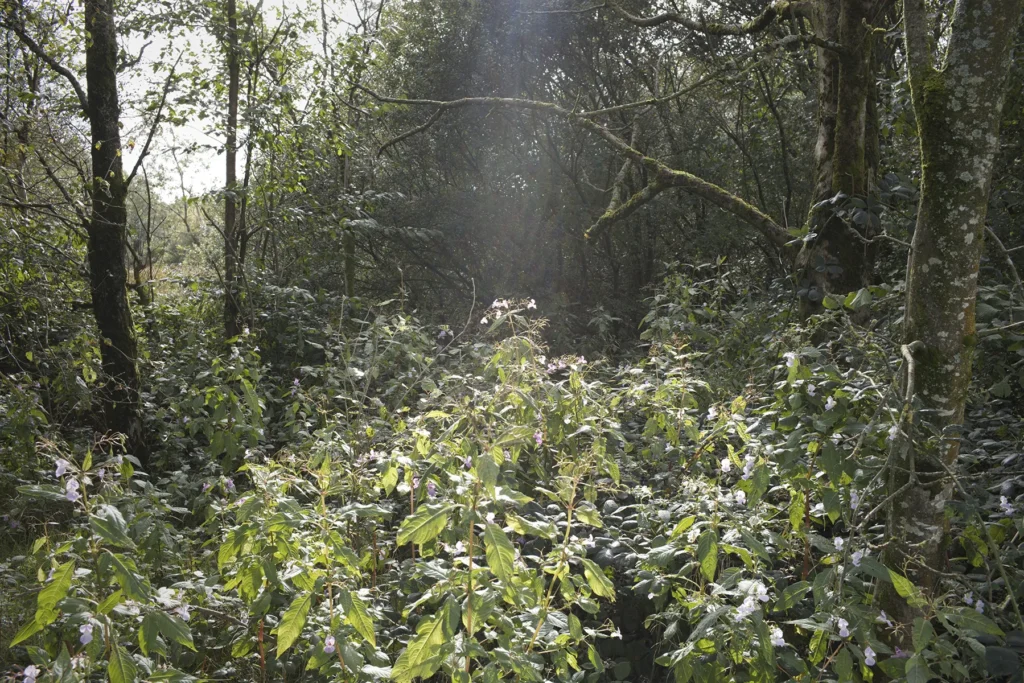
A tradition, a practice,
encouraging growth in hedgerows.
Boundaries made organic
between farmland’s different zones.
Dividing those fields with different uses,
creating that simple beauty of the distinctive
English countryside that we all know.
And so…
The Lig.
Lines of undergrowth, overgrown,
tangled with blackthorns, hawthorns.
Two men standing,
pruning misguided branches.
It’s the son
who bends a hawthorn tree
towards Dad,
who chainsaws
then axes.
Then the weight of them both,
father and son,
pull the tree downward,
creating “a lig.”
Laying it down, yet
still connected to the stump,
this vital link looks tenuous
but nature doesn’t need much.
Life (the sap)
will always find its way up.
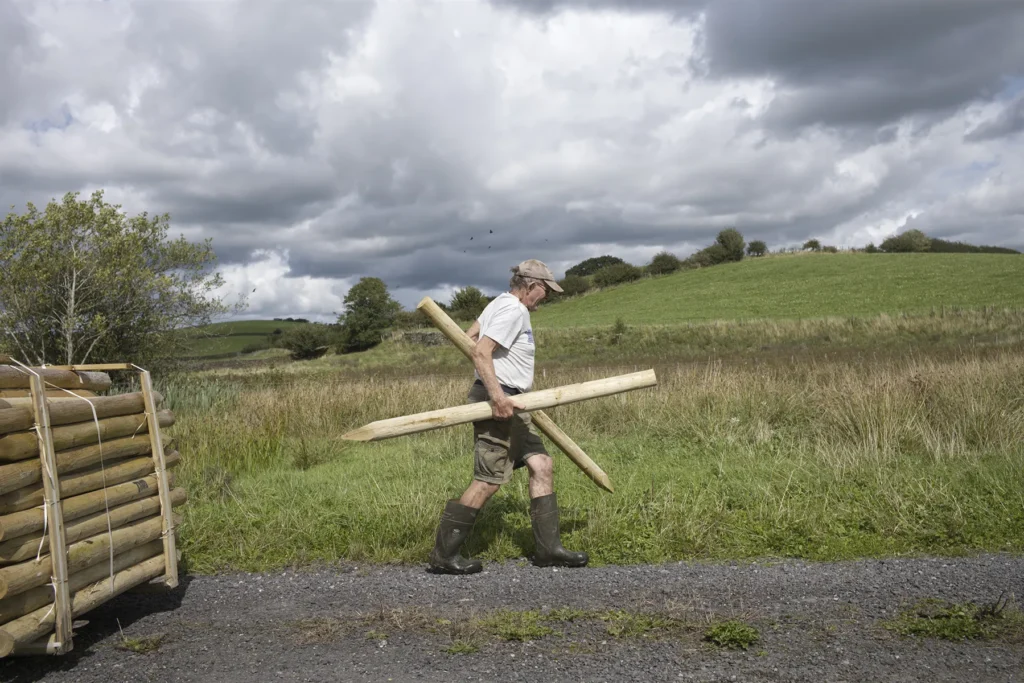
Skilfully twisting
bows into breaks,
cultivate a network
of linking,
artistically shaping,
weaving a new lineage.
Grandad turns up.
They pass him the nippers.
He passes them advice.
Tending seven miles of hedgerows,
linking much more than three lifetimes.
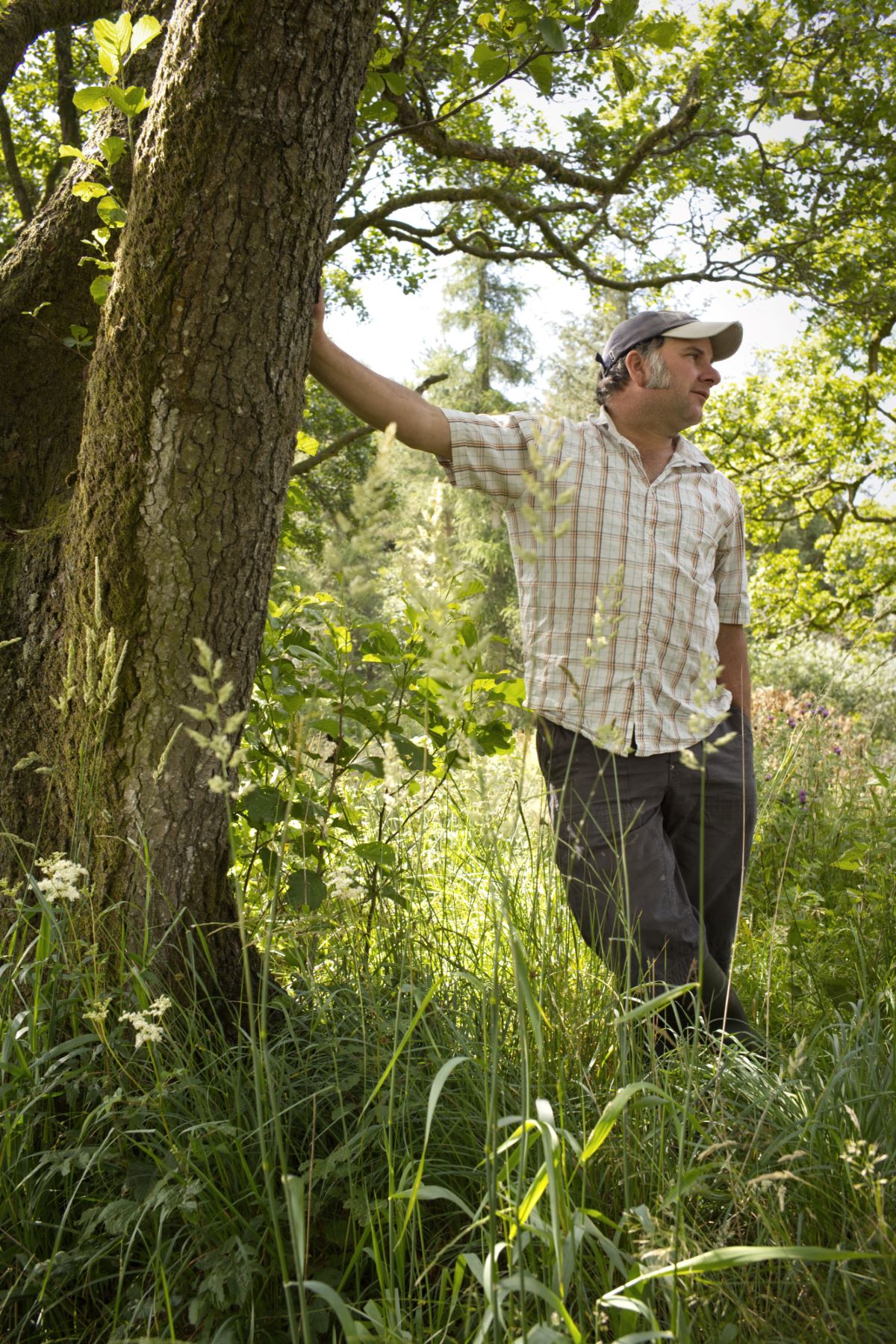
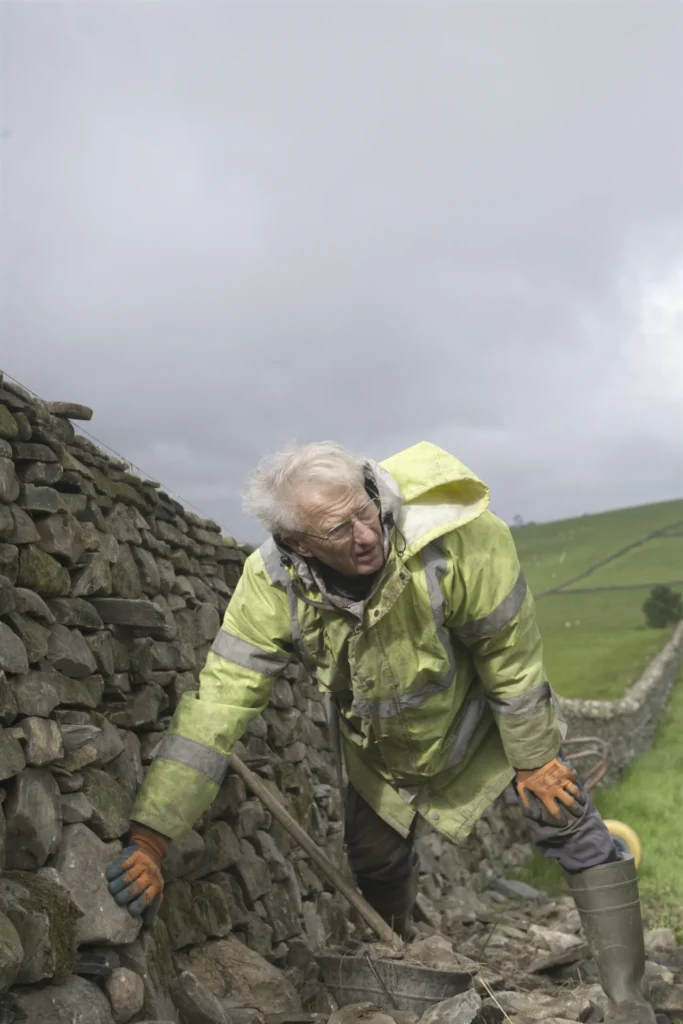

An ancient tradition places these
on the cutting edge of a field.
Renewed culture of agriculture,
from roots to fruits that it yields.
These hedgerows become homes
for the hedgehog, the vole,
fieldmouse, attracting owls,
tree sparrows, blackcaps, whitethroats,
bugs, butterflies and bees.
So pollen and seeds
are cast on the breeze.
A grandfather ligs,
ligs a father, a son.
They say: Love the little stuff
and the bigger stuff will come.
Sooner than you think,
the lig turns green –
moss and lichen –
and with over 130 species inside them,
the hedgerow shows
when a barrier can be a corridor
for life to move through.
Build a hedge, not walls.

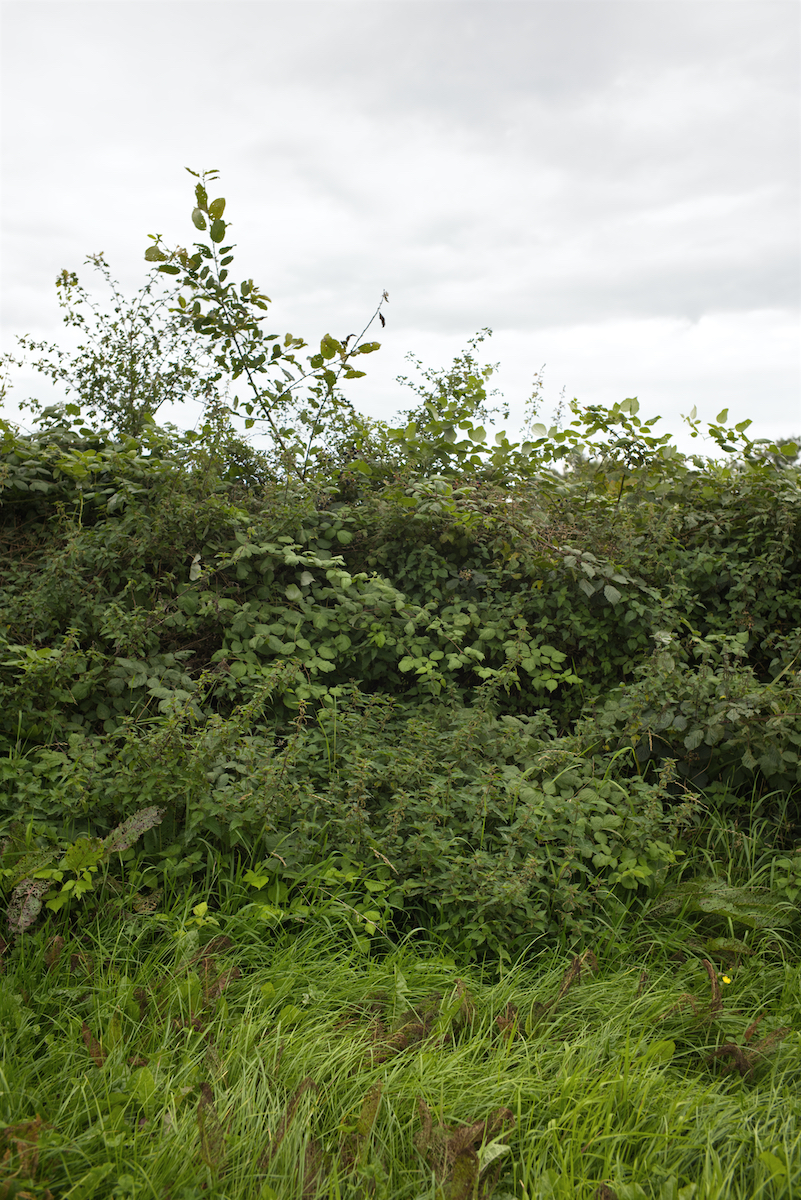
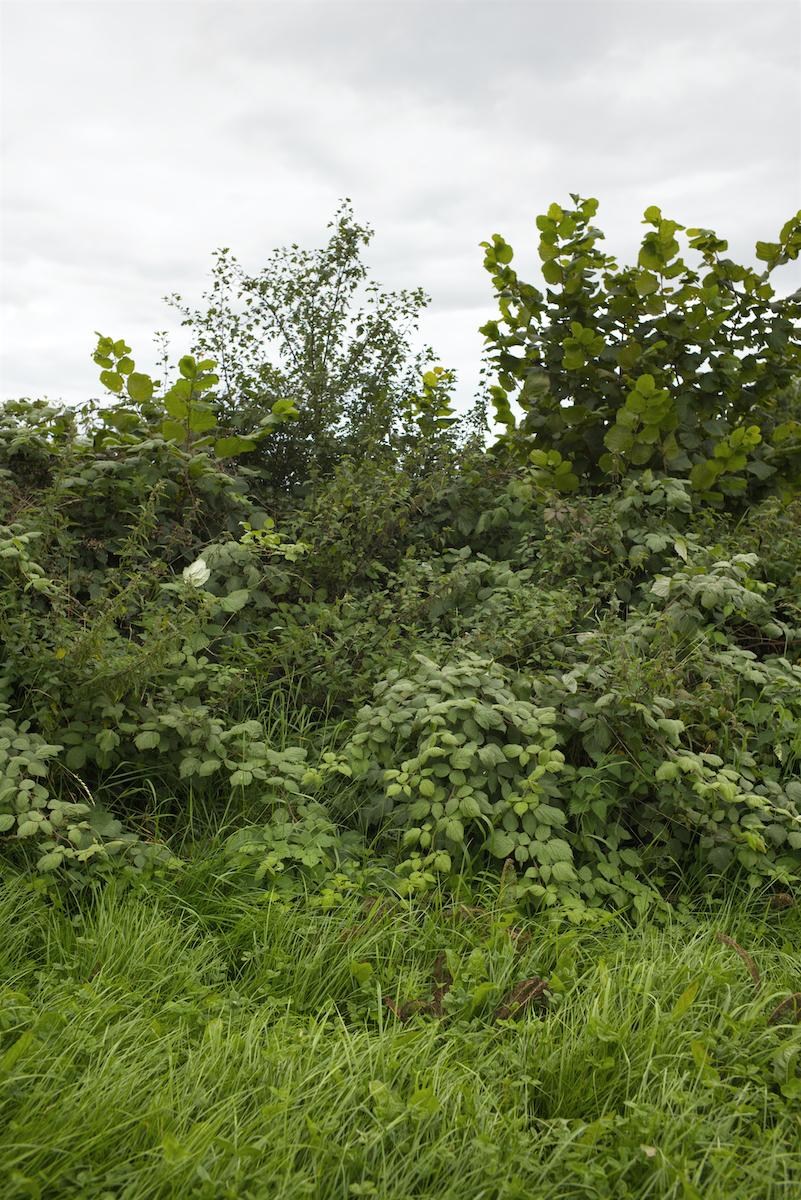
And if you don’t lig?
Someone asks why?
Then you’re left with a row of trees
that’d blow over and die.
See, to lig is poetry.
Cutting and bending lines so
new life will come,
inking with saplings
across landscapes,
collecting carbon.
Writing with hawthorn,
blackthorn and willow
with cursive hand.
A trio of landowners
with the onus on the land.
The lig is up.
And they leave to go home.
While these seemingly broken trees
breathe new growth.
ABOUT THIS STORY
Half a century ago, ‘The Green Revolution’ waged war on nature, pressuring farmers to poison, plough and expand. Britain is now one of the most nature-depleted countries in the world: less than half of our biodiversity remains. Insect abundance has dropped by 64% in just 20 years; facing the reality that three quarters of food crops rely on these very pollinators, farmers like James Robinson are joining forces with nature to mount a new revolution that is really green.
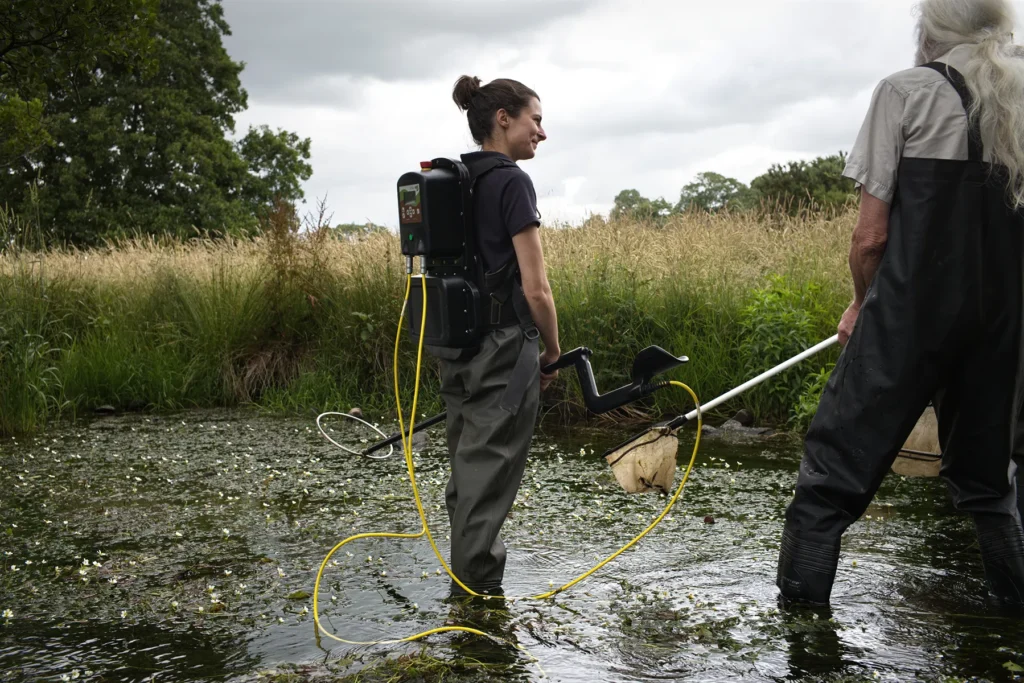

“I hope to help the public and policy makers recognise the great potential of farms as sites for biodiversity renewal, by showing how it is possible to reconcile nature-friendly practices with economic incentives on a working farm.” Johannes Pretorius, photographer
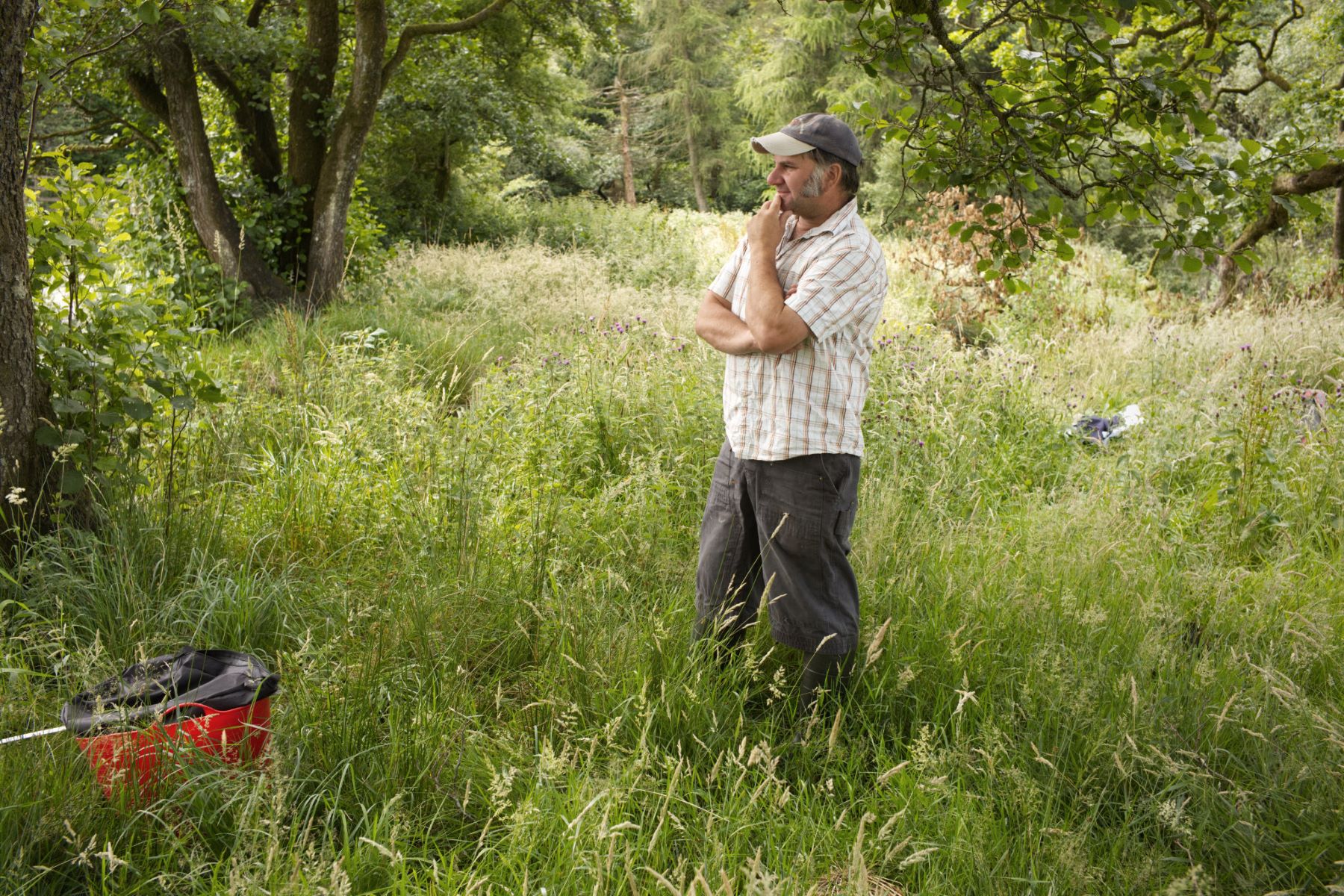
On this organic 300-acre farm in Cumbria, James, his father and son are weaving a wild tapestry of grassland, woodland and becks, threaded together by seven miles of ancient hedgerow. Through an intimate knowledge of the species who share this space, regenerative farming practices, and the family’s unique hedge-laying language of ligging, they are creating an agri-culture for the entire community of life.
ONE THING YOU CAN DO
James Robinson is a member of the Nature Friendly Farming Network, our Environment Partner for this story. They have created this brilliant guide to shopping: buying local and seasonal produce is a great place to start.
IN THE PRESS
“There is loads of wisdom in old practices and old dialects that we can draw from…It was really inspiring, as a city kid, seeing that the work they do in a morning will have a resonance in fifty years’ time.” Testament, poet
Catch Hot Poet Testament sharing his experiences on Strickley Farm and performing The Lig live on BBC Radio 4’s The Verb in this beautiful feature exploring hedgerows and language.
“My job, whether it’s through rap, poetry or beatbox, is telling stories. Stories about people. These can give us direction in life, including what to buy in the supermarket.” Testament, poet
Listen to Testament, photographer Johannes Pretorius and farmer James Robin on BBC Radio Cumbria:
THROUGH THE LENS

“By balancing intervention and renewal, the Robinsons embrace a new sensibility that reconciles economic viability and environmental sustainability. This proactive approach is a credible example to their peers. It can also serve as a model to society at large.” Johannes Pretorius, photographer
Read Johannes Pretorius’ reflections on his commission on ligging for We Feed The UK:
“I think photography tends to either romanticise a farming landscape or it vilifies it…the truth is, in fact, that it’s neither of those. So I try to capture some of that tension between doing the right thing for the environment and ensuring that the farm is productive; to support the famers’ livelihoods and indirectly to support our livelihoods because it’s a place where food is produced.”
– Johannes Pretorius, photographer
Watch this beautiful short film featuring Johannes Pretorius, James Robinson, and the students they have been working with on Strickley Farm.


